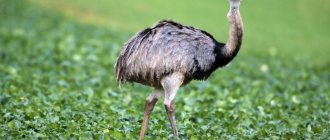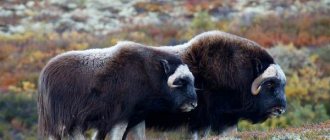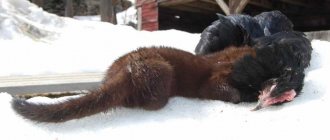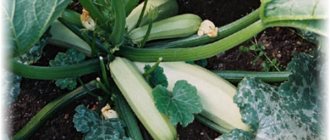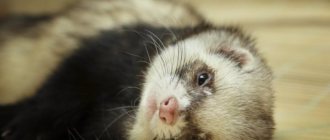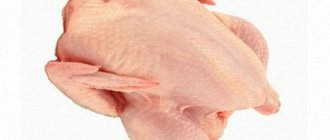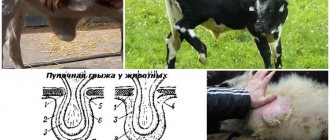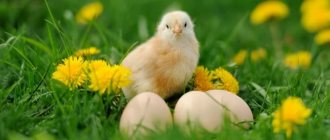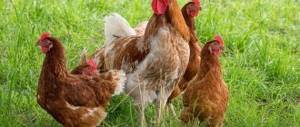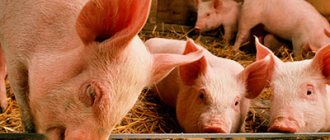Creating conditions
When planning to get a pet ferret, you need to prepare the room where the pet will live:
- The domestic ferret has a very flexible body and can climb into fairly narrow cracks and holes, get stuck in them and die. Therefore they should be sealed.
- Domestic ferrets have poor vision, and therefore cannot adequately judge the height at which they are located. Therefore, the animal should be blocked from accessing the open balcony and windows.
- You should not give your pet access to a container with water, for example, a toilet. The fry is very curious, she can climb in there and drown.
- All household chemicals should be kept locked and high in cabinets. Otherwise, the animal may chew through the packaging and suffer. It is also worth removing all breakable objects.
- If you are going to keep your ferret at home, you will have to remove all indoor plants. The fret loves to dig the ground and sooner or later the flower will die, and the animal may also die if the plant turns out to be poisonous.
- You will need to learn to carefully close all doors, since an animal can run out into the street through the front door, and you can hit your pet through the interior door.
What does it eat?
In the wild, they hunted small rodents and rabbits. Sometimes birds were also hunted.
Interestingly, due to its good metabolism, the animal needs to be fed 10 times a day.
The food of these pets should consist of proteins and fats. Food must contain taurine. Therefore, animals are usually fed raw meat. Some owners give them cat food, but in this case you should be wary of fish products, which will cause an unpleasant smell in the litter box. Vitamins are often added to food, because in captivity they do not receive the necessary substances.
Animals should not eat chocolate and coffee, milk and tea. Vegetables and fruits will help diversify their diet.
What does a ferret look like?
Description of an adult animal:
- the body is elongated and flexible;
- the legs are strong with well-developed muscles, so the animals move quickly and swim well;
- the animal has long and strong claws that help it dig holes and climbs trees;
- body weight reaches 2 kg, length - 50 cm;
- the animal has a long neck, an oval head with an elongated muzzle; it has a characteristic black pattern resembling a mask;
- the ears are small and round in shape;
- The fur is shiny, its color can be white, gray, black or mixed.
Like every pet, ferrets also have their own advantages and disadvantages.
Therefore, before you get a ferret as a pet, it is worth considering all the pros and cons of keeping them.
The benefits of content include the following:
- the animal is smart and active, you won’t be bored with it;
- Ferrets have different personalities and you can choose the pet that suits you best;
- despite the fact that the predator is nocturnal, it easily changes its habits and adapts to its owners;
- the animal is hypoallergenic compared to cats and dogs;
- it is not necessary to walk him;
- the animal can be trained to a tray;
- quickly gets used to the harness, unlike a cat;
- after castration, the male becomes more active, his musky odor disappears
The disadvantages of the content include the following:
- the animal has paraanal glands, and if the pet is frightened, it begins to smell unpleasant, but the smell quickly disappears;
- the ferret marks the territory;
- a musky smell emanates from the fur of the animal, some people do not like it;
- a ferret can chew through wires and damage furniture;
- the ferret is constantly digging something, and it will not be possible to wean her off, so you will need to specially arrange a place where she can implement her habits;
- Furo likes to chew on garbage cans;
- there are few veterinarians who can provide qualified assistance to animals;
- Pets love to hide small personal belongings of their owners in their burrows, and also gnaw on springy things.
Compatibility with other animals
The process of introducing your ferret to other pets that live in your home must be done gradually, after the animal has fully adapted to life in your apartment, that is, no earlier than a month.
Ferrets and large breed dogs get along very well in the same apartment, very often they become inseparable friends. As for smaller dogs, complex relationships can be traced here; very often ferrets can even offend defenseless decorative dogs.
Ferrets' relationships with cats can be radically different, which greatly depends on the nature of both animals. There are cases that both ferrets and cats can offend each other, or vice versa - they can get along well together and be friends.
While ferrets have more or less good relationships with cats and dogs, ferrets will never find a common language with birds, rodents and reptiles. For ferrets, small pets are considered desirable prey that they will constantly hunt and try to eat.
Where to keep the ferret?
Keeping a ferret at home is possible:
- In a cage. Its size should be large enough - 80x80cm. It should have a house (a box or a piece of pipe) in which the animal can hide from prying eyes. It is worth hanging a hammock in it, placing toys, a food trough, a sippy cup, and a litter tray. Toys should be large enough so that the ferret does not swallow them; they should not be silicone or plastic, as the animal can chew them and choke. If the apartment is large, then you should put several trays, since the animal may not reach the only toilet. If the furo feels comfortable, it will actively jump in the cage. When it moves from side to side, it means that the pet is not happy with something. But you need to remember that the ferret cannot be kept in a cage around the clock; it must be let out to “walk” around the apartment.
- On the insulated balcony. There should be no cracks in it from which it will blow. On hot days, the animal must be protected from overheating.
- In an apartment without a cage.
How to keep a ferret at home is up to its owners, depending on their capabilities. If you can’t constantly monitor the animal, then the best option is a cage. While the owners are not at home, a domestic ferret can sleep in its house for 20 hours.
Where does it live?
Previously, Frets lived in forests, near bodies of water. Today they quietly inhabit people's homes. Black-footed Frets usually create burrows for themselves and feed on dogs. This subspecies was found in Canada and America. Due to the fact that agriculture did not develop in the Great Plains, the animals were on the verge of extinction.
In 1987, the last individuals were caught in Wyoming. Experts began breeding them in captivity. Since about 1991, descendants of females from this small group have already inhabited Montana and South Dakota, New Mexico and Colorado. But already in 2008, the black-footed ferret was listed in the IUCN Red List due to the threat of extinction.
Feeding rules
A properly selected diet will determine how the animal will feel.
In the wild, ferrets eat meat. The ferret should also eat raw meat. This can be chicken, turkey, lean beef and veal. It is acceptable to feed the animal with offal.
The meat that your ferret eats must be purchased from reliable sellers to avoid infecting your pet with parasites.
It is also permissible to give the animal:
- raw quail and boiled chicken eggs;
- special feeds, but only expensive ones, which may contain prohibited compounds;
- fish, but not all fish, flounder is allowed.
You should not give the animal:
- milk, it is not absorbed by the ferret’s body and can cause stomach upset;
- food from the hosts' table;
- citrus.
The life expectancy of a ferret at home directly depends on proper nutrition.
The ferret should always have access to food. The bowl must be washed after each feeding; the pet will not eat stale food.
How to choose a ferret when purchasing
If you decide to have this amazing animal at home, then you need to take into account all the nuances of choosing a ferret so that it grows healthy and delights you with its presence for a long time.
Of course, it is better to purchase an animal not in stores, but directly from the breeder, where you can look at the ferret’s parents, their living conditions, learn about feeding and all the information that interests you.
First of all, before purchasing, pay attention to the parents of the baby you have your eye on. The weight of the female who gave birth to the animal must be at least 1 kg; it is at this weight that normal pregnancy and childbearing are possible. The weight of the male must be at least 2 kg.
Observe the behavior of the parents, especially the mother: if she is active, makes contact easily, does not scratch, does not try to bite - this is a positive sign for the purchase.
Talk to the breeder about animal nutrition. You should know that ferrets must eat meat. If the basis of their diet is dry professional food, this is certainly a plus, but meat should still be added to such a diet. If the female did not eat properly during pregnancy and feeding, this can lead to rickets in babies quite often.
It is also worth paying attention to the appearance of the animals: if they are clean, well-groomed, their fur is smooth and fluffy, this means that the hygiene is at a high level.
The breeder must have documents for the animal in the form of a certificate, veterinary passport with all vaccinations and pedigree. Inspect them, and if something is unclear or something is missing, be sure to discuss this point with the seller.
Only when all of the above points satisfy you, you can proceed to examining the baby.
The condition of a healthy ferret is characterized by:
- snow-white teeth;
- clean fur, soft and without bald spots;
- lively eyes, clean and clear, without discharge;
- cold and wet nose;
- vibrissae of equal length, not brittle;
- flat back;
- clean tail.
A healthy animal will be moderately well-fed: neither fat nor thin.
Babies at 1.5 months move confidently, but may still be a little clumsy. At this age, they already walk confidently, but if you notice that their hind legs move apart during movement, then most likely these are the first signs of rickets. Take the ferret in your arms, it should frolic, play and be curious; if it scratches or tries to bite you, behaves aggressively or gets very scared when touched, think about whether it is worth purchasing this animal.
Hygiene procedures
In order for the fret to look neat, it should be carefully looked after.
Trim your animal's nails every three weeks. Otherwise, they will grow too long, and it will be difficult for the animal to move.
The ferret needs to be bathed. Not all animals love water treatments. You cannot wash the animal by force, otherwise it may bite the owner and scratch his face and hands.
How to bathe a ferret:
- you cannot turn on the tap while bathing the animal, as the noise of the water will frighten it;
- you need to make sure that water does not get into your ears or eyes; to do this, lubricate the skin around them with Vaseline or a greasy cream;
- washing the face is allowed only with water without hygiene products;
- It is forbidden to turn the animal on its back;
- when there is no special washing shampoo, you can use baby shampoo; you should not use soap or products for other pets, since they have an unsuitable pH, which can cause dysfunction of the sebaceous glands;
- After the bath, the animal should be dried with a dry towel and the fur should be combed with a massage brush.
It is better to watch the video on how to wash a ferret for the first time, otherwise, if you do it incorrectly the first time, the ferret may get scared and it will be problematic to bathe him in the future.
Appearance
The ferret has an external resemblance to the European ferret, because it is its domesticated form. The animal's fur is yellowish, its eyes are red. Fretka's body length is 50 cm including a small tail. The weight of the animal is a kilogram.
Ferrets – pets stop growing by the age of one year. The female can weigh from 300 g to a kilogram. The body length of a female individual is from 33 to 35 cm. The weight of a male can range from 900 g to 2.5 kg, the body length is approximately 40 cm. Castrated male individuals weigh less. The tail of animals is small - only 7-10 cm in length. Frets raised in captivity have fangs. There are only 5 claws on the paw of a marten representative.
There is also a black-footed subspecies of Fretka. The fur of the individual is the same color as that of the ferret. A distinctive feature of the animal is the black circles located on and around the eyes. The animals also have dark markings on their tails. An individual usually weighs less than a kilogram, sexual dimorphism is expressed in size: males are larger. The body length of an individual can vary from 38 to 50 cm. Scientists have bred domestic Ferrets in order to create a variety of fur colors.
Upbringing
Ferrets, like dogs, are smart animals; they can close the door behind them in a house or plug a hole with a rag. But they won't do anything they don't see the point in. For example, a furo will not bring slippers to its owner and will not stand on its hind legs.
Raising a ferret requires patience; the pet should not be beaten, since the animal’s bones are fragile and can be easily broken, which will cause the death of the animal.
It is possible to fret:
- learn to go to the toilet in one place;
- respond to your name;
- stop biting and running on the table;
- leash training, etc.
When a pet is afraid of its owners, you need to slowly accustom it to yourself, observing a number of rules:
- You should not pick him up especially unexpectedly, otherwise the animal may become even more frightened.
- You need to speak to the ferret kindly, without scolding him or raising your voice.
- Give your pet a variety of treats. At first, he can pick up and take food to his burrow.
- A good result will be achieved if you pick up a sleeping animal and when it wakes up, give it something tasty.
To accustom a ferret to a nickname, you need to call it every time, calling it to you, giving treats. And he will quickly get used to it, only the nickname should be the same every time, you should not use diminutive forms of endearment, otherwise the pet will get confused.
What to feed the ferret?
Dry food is the animal’s main diet. Food specifically recommended for feeding cats and ferrets is suitable . It is not recommended to offer food intended for other animals to ferrets.
And even cat food is not all suitable for ferrets. It comes in 4 classes:
- Economy
- Average.
- Premium
- Professional.
To keep your pet healthy and strong, immediately accustom him to premium or professional class food. It is preferable to give dry food . He will clean your teeth and remove tartar.
The animal must have constant access to water. The food should also be kept in the bowl at all times. An animal must relieve hunger whenever it wants. Remains of food should be removed daily, the dishes should be washed and a new portion of food should be added.
Natural food
The ferret is a predatory animal. Therefore, her diet should include meat, offal, eggs, and fish. You need to feed 2 times a day. Fish should be offered to an animal, but rarely . Ferrets love cod, flounder, trout, and mackerel. Chicken eggs need to be boiled. The ferret loves to eat cottage cheese and cottage cheese.
You need to buy vitamin complexes for your pet. They are especially required when the animal is actively gaining weight or shedding.
Breeding ferrets
05/30/2019 Beautiful fur and relative ease of cultivation make ferrets one of the most economically attractive fur-bearing animals that can be kept on small backyard fur farms. Fretka
is a domesticated ferret.
More precisely, it is an intraspecific cross the black forest
ferret and
furo
(its albino form).
There are three types of ferrets found in the wild: the light steppe
ferret,
black forest
and
blackfoot
. The first two species are more numerous and quite widespread, and the blackfoot is considered rare; it lives in North America and is now on the verge of extinction.
All ferrets are predators; they belong to the class of mammals, order of Carnivores, family of Mustelidae. In their natural habitat, they exist separately, communicating with each other only during the mating period. Typically, ferrets hunt small rodents, birds, lizards, and eat eggs, insects, and fish. If their nests are located near a person’s home, then they can cause significant damage to the farm by hunting small poultry, stealing chicks or eggs.
An albino form of the forest ferret, the furo, was tamed and domesticated in southern Europe more than two thousand years ago. Interestingly, the animals were used by peasants to combat rodent pests, performing the same role as cats. A long period of domestication left its mark on their behavior. Furo, unlike the ferret, does not show aggression towards humans, reproduces well in captivity and is strong enough to cope not only with a mouse, but also with larger prey (rats, rabbits, crows).
Ferrets obtained as a result of mating a black forest ferret with a furo treat people more kindly, and the quality and color of their fur is much more attractive than that of a black ferret. The fur of ferrets changes its shade depending on the angle of its inspection. A similar effect is created due to the different colors of the guard hairs (black or dark brown) and the undercoat (orange-yellow, white, light gray or light brown). The contrast in the color of the coat and undercoat creates a special play of color in fur products made from animal skins (fur coats, coats, hats, boas, collars, capes, etc.), which is very much valued in fur production.
The ferret is a rather large animal: adult males reach a length of 50 cm, while females are somewhat smaller - up to 40 cm. The weight of the animal is about 1.5 - 2 kg. The body of the ferret is elongated, elongated, like that of all mustelids; the paws are short, but very strong, with tenacious claws. The tail is usually fluffy, up to 18 cm long, darker in tone than the main body color.
The color of the guard coat is dark, with a lighter undercoat, on the limbs it is almost black or dark brown, on the belly it is light, matching the undercoat. Sometimes dark fur on the animal’s muzzle forms something like a carnival mask, but more often it looks like dark circles around the eyes, which can connect on the bridge of the nose. The lifespan of a ferret at home can be up to 10 years, but it is not kept for that long, since the economic life of the animal does not exceed four years.
You can keep ferrets in any cages of suitable size or tightly closed enclosures, but if there are a lot of animals, then it is most convenient to do this in sheds
.
A shed
is a frame structure consisting of supports for two rows of cages, covered on top with a common gable roof to protect animals from direct sunlight and precipitation. The side walls of the shad are often completely absent; the ends of the cages face outwards. In bad weather, to protect from the wind, the sides of the shed can be temporarily covered with curtains of PVC fabric, tarpaulin or wooden shields.
The ends of the shad usually have walls and doors (or gates). Between the rows of cells, a passage (passage) is left along the entire structure. The length of the shad is not limited and is determined only by the needs of the fur farm. Fur-bearing animals, being in such semi-open spaces, have high quality fur and begin the rut (the period when fur-bearing animals mate) at the usual times characteristic of their species.
It is better to keep the parent herd in individual cages, and young animals for fur purposes, subject to abundant feeding, in spacious, group cages. The size of an individual cage for one ferret can be as follows: length 90 cm, height 45 cm, width 45 cm. But if the cage is larger, then it will be good for the animal.
In more spacious cages, the ferry moves more actively, and its fur is preserved in a purer form. A nesting house must be attached to the cage. In nature, wild ferrets live in burrows, and the house is such an imitation, so such housing better suits the physiological needs of the animal.
Feeding ferrets is not difficult, because they are unpretentious in feeding. But the owner should not abuse this. Poor quality or insufficient quantity of feeding cannot but affect the condition of animal fur, the growth rate of young animals and the reproductive abilities of the parent stock.
According to the physiological needs of ferrets, the structure of their diet should be as follows:
— animal protein – 45%;
— fats of animal origin – 25%;
– carbohydrates – 25%;
— fiber – up to 5%.
To compile such a diet, you can use the following foods: meat, meat trimmings, tripe, liver, lungs, ears, lips, bird necks, heads, small fish, blood, cottage cheese, eggs or incubator waste, skim milk, cereal porridges, vegetables, meat and bones , fish meal.
Ferrets eat relatively a lot: one adult animal eats up to 400 g of food per day. An approximate daily diet for him might look like this:
- food of animal origin (meat, meat products, fish, eggs, cottage cheese, etc.) 180 - 200 g;
— animal fat 80 g;
- boiled vegetables 50 g;
- cereal porridge 70 - 100 g.
Feed can be fed in its natural form, or in the form of a crushed homogeneous mixture. Meat and bone meal, fish meal and vitamins are mixed into the ready-made chilled food.
Frets reach sexual maturity at one year of age. Their rut occurs twice a year. During this time, females manage to feed their offspring twice. The first breeding season begins with the onset of warm weather and lasts from the last days of March to the end of April. The second runs from mid-June to early August.
The timing of the onset of the second mating season depends on when the suckling period of the first brood of young animals of this female was completed. If the female was covered for the first time at the end of April, then the female comes to the next hunt at the end of July or in August. But it is undesirable to mate ferrets so late, because late broods grow much worse. By winter, they do not have time to gain weight and become pubescent normally.
The breeding season is a very important period in the work of a fur farm. Conducting a breeding campaign requires a person to pay great attention to the condition of the animals, experience and appropriate qualifications. In a farm environment, the owner himself monitors the onset of estrus and heat in females based on the condition of her external genitalia and behavior. When heat approaches, the female becomes restless, eats food worse, and her loop turns red and increases in size. All females should be examined every three to five days. When females are detected in heat, they are placed in a cage with a male every day or every other day.
If the female is not yet ready for fertilization, then she behaves aggressively with the male, and the male will not try to cover her. On favorable days (there are from two to five, and they come at the end of the arousal stage), the female allows the male to approach, and he immediately covers her. If mating has taken place, it is repeated the next day to better guarantee pregnancy and increase the number of cubs in the future brood.
The duration of pregnancy for ferrets is 40 – 43 days. During this period, the owner must create the most favorable living conditions for the female and provide adequate feeding. Otherwise (due to stress, injury, poor feeding and unsatisfactory living conditions), some or all of the embryos may die in the womb.
A pregnant ferret becomes calm, moves less and eats more, and her belly increases. On the 20th day, the animal begins a period of molting and the mammary glands begin to develop. The portion of food for a fertilized female should be increased until her appetite is fully satisfied. The better the female feeds during the period of bearing the cubs, the larger they will be at birth, and the greater the reserve for milk production will be during the period of feeding the brood.
Before giving birth, the female builds a nest from litter and her down in the nesting house. Childbirth, as a rule, takes place without complications, usually about 8 – 10 cubs are born. The first offspring is always more numerous than the second (summer) offspring. The cubs will be born without teeth, blind and deaf, covered with dark short hair, weighing up to 10 g, and no more than 8 cm long.
The milk production of females is very high; the milk produced by a ferret can be enough to feed 12–16 cubs. Normally fed babies sleep most of the time while in the nest. Usually the female has 10 – 12 well-developed nipples. If more cubs are born, then some of them may remain hungry and crawl restlessly around the nest box, complaining for food. In most cases, the female has enough milk for everyone, even if there are fewer teats than the number of animals in the brood. But in young and insufficiently nourished females, the “extra” cubs may become malnourished. Such babies will either have to be artificially fed (and this is a very troublesome task), or distributed among low-fertility females.
When the cubs are placed in another nest, the female stepmother is distracted with a treat so that she does not see human manipulations in the nesting house. Hands should be washed thoroughly with hot water without soap before work. The “foundlings” are carefully rubbed with down from the receiving nest, after which they are placed in the center of the brood pile and left there for 40–45 minutes. During this time, being in the nest with other cubs, the fosterling acquires the smell of the new nest. After the specified time has passed, the hatch of the nesting house must be opened and the ferret-comilica must be allowed in to the offspring. Furo females accept other people's cubs more easily. You can even add cubs of other mustelid species (mink, sable, etc.) to the furo’s nest.
Young ferrets grow and develop quickly during the suckling period. Babies begin to develop teeth between the 16th and 18th days of life. First, the canines grow, then, on the 22nd - 24th day, the incisors, and after them, at 28 - 30 days, the molars. The auditory canals in cubs open on the 24th - 27th day, the eyes - on the 30th - 32nd day.
Lactation in females lasts up to 30–35 days, after which the amount of milk decreases, and by the fortieth day it stops completely. You can feed young animals with low-fat minced meat from the 20th day. This is especially true if the litter size is large. At the age of 45 - 50 days, the cubs need to be separated from their mother and raised separately.
After laying the cubs, the female comes into heat again a week later and can be fertilized using the same technology as during the spring rutting period. Using this feature of ferrets, you can combine two small broods under one female, and mate the second to produce the next offspring.
It is convenient to raise young ferrets in spacious cages in groups of several animals. When keeping young animals in groups, all conditions should be created to avoid competition for food and territory. To do this, feeding should be plentiful (as much as possible), and the front of the feeder should be such that all animals can approach it at the same time, without creating crowding. With sufficient feeding and good quality feed, young animals quickly gain weight.
The growth rate of the first brood of the year is higher than that of the second. Males grow noticeably faster than females. In a month, the cubs of the first brood weigh 160 g (females) - 180 g (males); the second at the same age - 130 g (females) -140 g (males). At two months, the first weigh 520 - 680 g, the second 400 - 470 g. At three months, the first - from 700 g to 1.2 kg, the second - from 700 g to 960 g. At four months, the weight of cubs from the first litters is from 810 g to 1.3 kg, and from summer broods: 800 g - 1.21 kg. Five-month-old females from the first broods weigh about 860 g, males - 1.6 kg, while females from the second broods weigh about 880 g, and males up to 1.4 kg. At six months, females of early broods weigh up to 950 g with a body length of 37 cm, and males - 1.85 kg with a body length of 44.5 cm. At the same age, females of late broods weigh 900 g with a body length of 35.5 cm, males - 1.5 kg, with a body length of 39.5 cm.
For breeding purposes, it is recommended to select animals only from the first litters.
The timing of fur development in young ferrets also depends on the time of their birth. At one and a half months, all cubs already have pubescence, similar in appearance to the fur of adult animals. Seasonal molting, after which ferrets acquire winter fur, in young animals born in the spring coincides with the molting of adult ferrets - it begins at the end of October, when the cubs of the first broods reach the age of about 4.5 - 5 months, and ends at the end of November or beginning of December , at the age of 6-7 months. At this age, young animals intended for fur production and discarded adult ferrets can be slaughtered.
In young animals that were born as a result of the summer rut, winter fur begins to grow from the end of December and reaches full development in February, when they reach the age of 5 - 5.5 months. In these animals it grows faster than in their relatives from spring broods, but it is not as thick and is valued less.
If you have any questions while reading this material, you can ask them on our forum. Chuguevets Vitaly
Caring for a ferret at home
To prevent feces from being scattered in the corners, the tray is securely fixed. If the ferret has not learned the skill of emptying into a tray from its mother, it will have to be taught something like this:
- Take the animal in your arms immediately after it wakes up for about five minutes.
- If you notice signs of anxiety (the animal backs away and raises its tail), place it in the tray.
- After successfully completing the act, reward your pet with praise and treats.
If excrement appeared on the floor while the ferret was walking around the apartment, scold it and place it in the enclosure. Place him there about once every half hour until the urine/feces remain in the tray.
If you want to wash your pet, use shampoos for ferrets, cats or children. The ferret is washed in a bath with warm water no higher than +40°C, rinsing off the foam in the shower. After the bath, dry him with a soft towel and take him to a box with clean rags, where he will complete the drying process.
Important! The ears of a healthy animal are not cleaned, but they are cleaned of brown plaque (if necessary) with a cotton swab with Vaseline, without going deep into the ear canal.
Domestic ferrets require care because they are deprived of the ability to dig frequently, which is why their claws grow. They are trimmed once a month with a cat's nail clipper or ordinary scissors, trying to bypass the blood vessel. If you get it, lubricate it with iodine. Enzyme-based preparations that not only mask but neutralize odors will help get rid of the specific aroma of a ferret. The most popular means:
- Zoosan (Russia);
- Miracle (USA);
- Dezosan (Russia).
They are also used to process the tray and remove marks.
Reproductive system
If you get a pair of ferrets, be prepared for the fact that they become pregnant 2-3 times a year, and up to 15 puppies can be born in one litter. Puppies are born blind and helpless, their mother feeds them with milk, and from two weeks of age feeds them with regular food.
Female ferrets do not stop estrus until the female becomes pregnant. If the female does not mate, she experiences physiological stress, which ultimately leads to serious problems. With a constantly elevated level of the sex hormone (estrogen), red bone marrow is suppressed, anemia is provoked, which subsequently leads to the death of the animal. The owner has 2 options: to produce offspring 2-3 times a year, or to resort to castration (surgical or chemical).
Male ferrets without mating actively mark their territory, their urine has a pungent odor, and the owner again has 2 options for solving the problem: ensuring the pet has a full sexual life, or castrating it.
Ferret nutrition: nuances
You can feed your ferret with special food, which you can purchase in our online store. But in order for the diet to be complete and varied, be sure to add meat, fish, and eggs to your pet’s menu.
The ferret must have constant access to food. After your pet has eaten, you need to wash the bowl, dry it and then refill it with food.
Do not leave old food in the bowl. Try to post relatively small portions that the animal can eat in one meal.
Should I get a ferret or not? Is the question still open? So it's more likely no than yes. If you have no more doubts, contact professionals to purchase everything you need for your pet.

